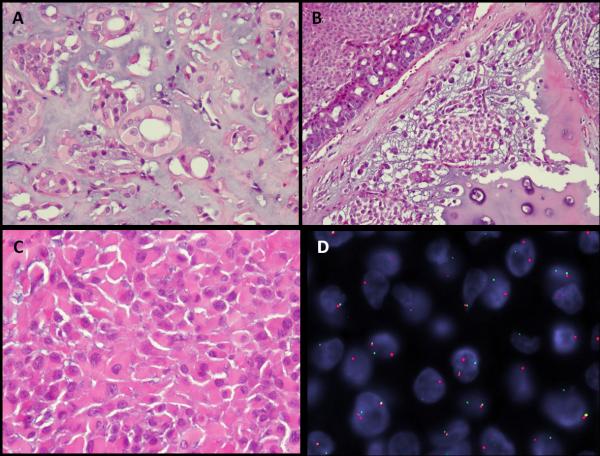Figure 1.
Morphologic spectrum of PLAG1-rearranged skin and soft tissue myoepithelial tumors is quite variable, but resembling the salivary gland pleomorphic adenoma phenotype. (A) Ductal structure lined by bland cuboidal epithelial cells with moderate amount of pale, eosinophilic cytoplasm embedded in a myxoid background (ME5, subcutaneous soft tissue, left 5th toe, 53 year old female). (B) Cribriform arrangement of tubulo-ductal structures adjacent to areas of more solid squamoid appearance as well as chondroid matrix differentiation (ME6, subcutaneous soft tissue, right foot, 52 year old female). C. Diffuse solid sheets of myoepithelial cells with a distinctive plasmacytoid appearance (ME9, skin, left hand, 37 year old female). (D) PLAG1 gene rearrangement by FISH showing break-apart signals (telomeric probe, green; centromeric probe, orange; ME9).

